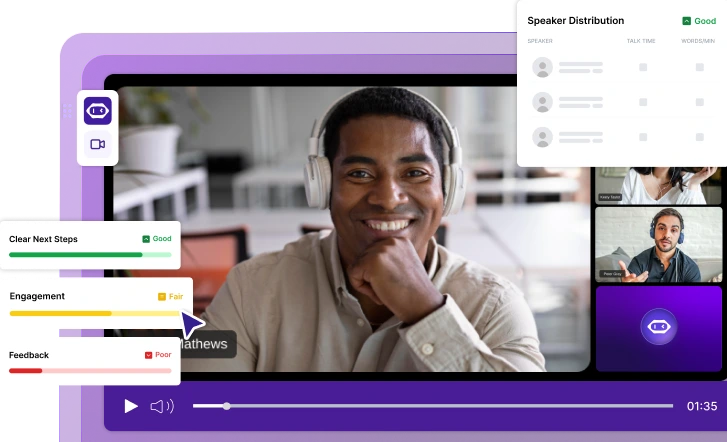Como fazer anotações de entrevista como um profissional [+ Modelo de notas de entrevista]
Domine a arte de fazer anotações em entrevistas para aprimorar suas habilidades e capturar detalhes cruciais. Obtenha as dicas de especialistas de que você precisa para melhorar seu desempenho na entrevista aqui!

✅ Free meeting recording & transcription
💬 Automated sharing of insights to other tools.

Fonte da imagem: Drazen Zigic em Freepik
As notas de entrevista são uma ferramenta essencial para recrutadores que buscam preencher vagas disponíveis com os melhores talentos.
Embora certos candidatos se destaquem por suas qualificações e personalidade desde o início, você deve oferecer a todos os candidatos oportunidades iguais de conseguir o emprego. No entanto, acompanhar o andamento de cada processo de entrevista pode ser uma tarefa assustadora, especialmente quando vários candidatos estão envolvidos.
Se você quiser aprender a fazer anotações de entrevistas que podem ajudá-lo a avaliar e classificar candidatos com eficácia para fazer uma seleção bem informada, continue lendo!
O que são notas de entrevista?
As notas da entrevista são registros escritos feitos durante as entrevistas de emprego. Essas notas capturam informações importantes sobre o candidato, incluindo suas qualificações, habilidades, experiência e respostas às perguntas da entrevista.
Eles podem incluir observações objetivas, como habilidades técnicas ou formação educacional, bem como impressões subjetivas, como estilo de comunicação ou adequação cultural.
As notas da entrevista servem como ferramentas de referência para os gerentes de contratação avaliarem os candidatos em relação aos requisitos do cargo e tomarem decisões informadas durante o processo de seleção. Eles ajudam a garantir consistência, justiça e precisão no processo de contratação e fornecem um registro documentado para referência futura ou para fins legais, se necessário.
Você deve fazer anotações durante uma entrevista?
Fazer anotações durante as entrevistas garante que os recrutadores não confundam candidatos ou ignorem aspectos críticos ao fazer uma escolha de contratação que seja do melhor interesse da empresa. Além disso, isso os ajuda a combinar as vagas abertas com a pessoa certa para o trabalho. Mas isso não é tudo.
Aqui está o que as notas da entrevista podem ajudar você:
- Ajude a refrescar sua memória
- Aumente a consistência nas avaliações
- Crie um senso de justiça e forneça proteção legal
A. Ajude a refrescar sua memória
Mesmo que você tenha uma memória excepcional, é improvável que se lembre de cada resposta que ouvir de cada candidato.
As notas da entrevista não servem apenas como uma ferramenta útil para relembrar as qualificações de cada candidato, mas também permitem que você anote suas impressões e avalie o quão bem cada candidato respondeu às perguntas.
Quando chega a hora de avaliar e tomar uma decisão, essas notas se tornam inestimáveis para comparar candidatos e determinar quem fará a escolha.
B. Aumentar a consistência nas avaliações
Como gerente de contratação, você deve ser capaz de comparar candidatos em igualdade de condições. Fazer anotações durante uma entrevista permite que você seja consistente em seus critérios de avaliação, acompanhando o mesmo conjunto de requisitos para cada candidato.
Além disso, as notas da entrevista podem ser compartilhadas com outros membros da equipe de contratação, o que garante que todos os membros da equipe estejam avaliando os candidatos da mesma maneira, o que reduz a probabilidade de preconceitos ou preferências pessoais influenciarem o processo de avaliação.

Além disso, notas detalhadas permitem que você forneça feedback detalhado e construtivo aos candidatos que o solicitarem, o que pode melhorar seu desempenho futuro e, ao mesmo tempo, demonstrar seu profissionalismo.
C. Crie um senso de justiça e forneça proteção legal
As notas da entrevista podem garantir que decisões de contratação são baseados no mérito e não em fatores subjetivos, pois reduzem a possibilidade de esquecer ou esquecer detalhes importantes.
Além disso, eles permitem que os gerentes justifiquem suas decisões para outras partes interessadas envolvidas no processo de contratação.
Ao apresentar suas recomendações ou justificativas, os gerentes de contratação podem consultar exemplos ou comentários específicos feitos pelos candidatos durante a entrevista, tornando o processo de tomada de decisão transparente e justo para todas as partes envolvidas.
Além disso, se você enfrentar acusações de preconceito em seu processo de contratação, essas notas podem demonstrar as qualificações e pontos fortes específicos de cada candidato, destacando o que determinou sua decisão final de contratação.
O que incluir nas notas da entrevista
Suas anotações devem destacar as respostas relevantes do candidato e quaisquer detalhes que possam influenciar sua adequação ao cargo.
Veja o que incluir nas notas da entrevista:
- Detalhes importantes sobre a entrevista em si, como data, hora e local
- Respostas específicas do candidato, como habilidades relevantes ou responsabilidades de trabalho anteriores
- Qualquer observação que você fizer com base nas respostas deles
- Potenciais bandeiras vermelhas, etc.
Como são as ótimas notas de entrevista
Embora o processo de anotações da entrevista deva ser personalizado para atender aos requisitos de cada empresa, existem algumas qualidades que todas as ótimas notas de entrevista têm em comum e, a seguir, discutiremos as mais importantes.
Aqui estão algumas das melhores práticas para anotações de entrevistas:
✔ Eles são concisos: As notas da entrevista devem se concentrar nos aspectos mais críticos relacionados às qualificações de um candidato, portanto, mantenha-as curtas excluindo informações desnecessárias para o processo de tomada de decisão. No entanto, você deve mantê-los abrangentes o suficiente para fornecer uma imagem clara do candidato.
✔ Eles são legíveis: As notas da entrevista devem se concentrar em aspectos relevantes relacionados às qualificações do candidato, portanto, mantenha-as curtas excluindo informações desnecessárias para o processo de tomada de decisão. No entanto, você deve mantê-los abrangentes o suficiente para fornecer uma imagem clara do candidato.
✔ Eles são objetivos e pertinentes: As notas da entrevista devem se concentrar no trabalho específico em questão e se o candidato se qualifica para ele. Evite incluir preconceitos pessoais ou qualquer coisa não relacionada ao trabalho, como notas sobre a aparência, idade, raça, sexo, status de deficiência, etc., pois isso pode ser visto como irrelevante, na melhor das hipóteses, ou discriminatório e ilegal, na pior.
Ferramentas que podem simplificar as anotações da entrevista
Antes de compartilharmos nossas dicas valiosas para fazer anotações em entrevistas, você precisará se equipar com algumas ferramentas para simplificar todo o processo.
Aqui estão as ferramentas de que você precisa para fazer anotações na entrevista:
- Caneta e papel: A anotação manual em um formulário de avaliação separada continua sendo o método preferido para fazer anotações em entrevistas, apesar de ser mais lento em comparação com o uso de um computador. Além disso, ao escrever notas, você deve ter cuidado para garantir que elas sejam precisas e associadas corretamente ao candidato correspondente.
- Laptop ou computador: Muitos entrevistadores acham que usar um laptop para fazer anotações durante as entrevistas é conveniente e eficiente. Lembre-se sempre de salvar as anotações do seu computador em um documento separado regularmente para evitar qualquer perda potencial.
- Assistente de reunião virtual para notas de entrevista com IA: Se você quiser pular completamente o processo de anotações, mas ainda confiar em notas de entrevista abrangentes para tomar decisões de contratação informadas, um assistente virtual de reuniões como MeetGeek pode ser o que você precisa para agilizar todo o processo.
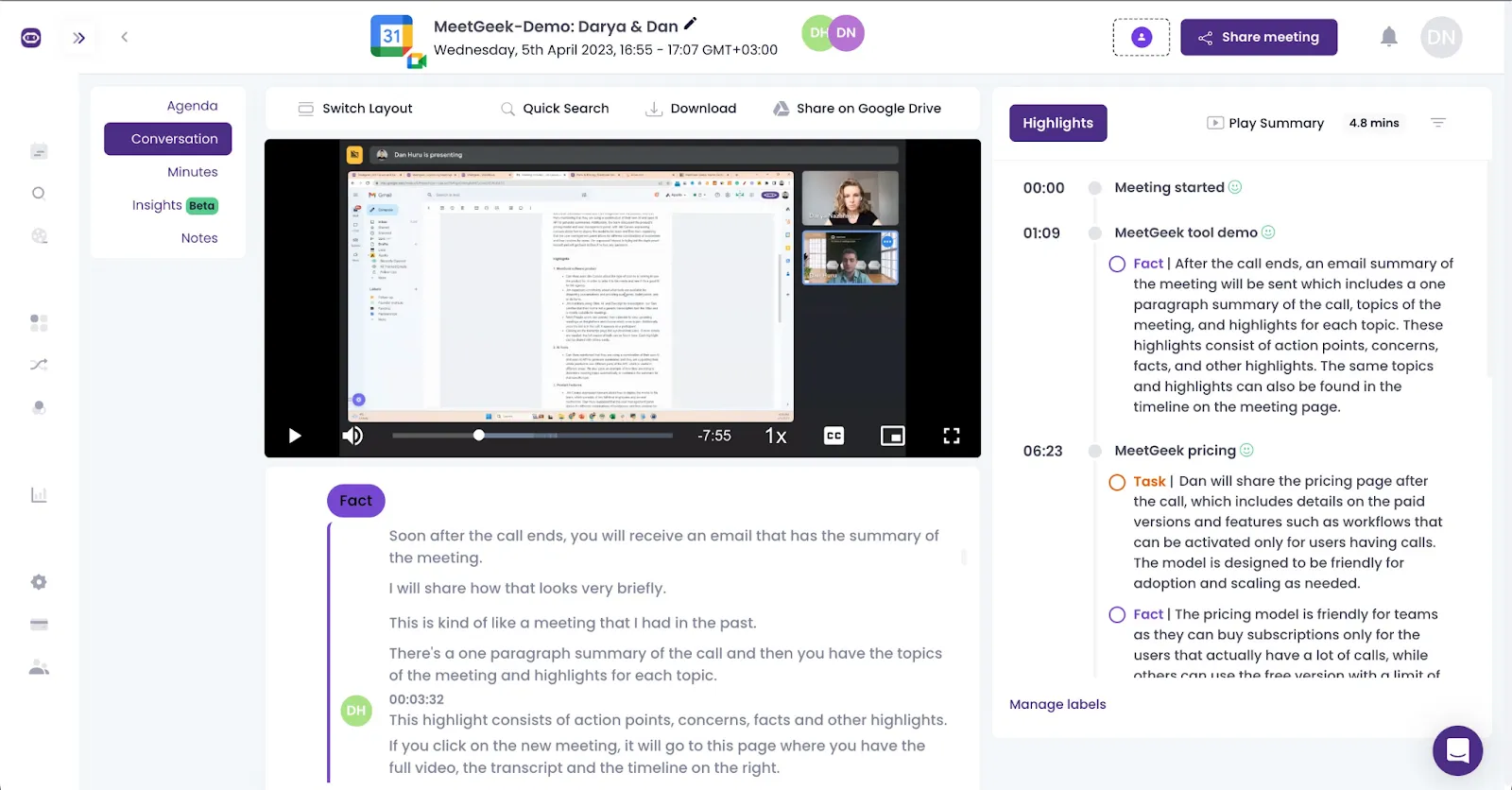
Experimente o MeetGeek gratuitamente!
Aqui está o que é um tomador de notas virtual como o MeetGeek pode ajudá-lo com:
- Gravação automatizada de reuniões: A gravação automática de entrevistas em vídeo deve ser o padrão, especialmente porque apertar o botão de gravação em cada reunião ou entrevista virtual pode rapidamente se tornar irreal.
- Transcrição precisa: Se você pode entender isso, o MeetGeek também pode. Nossos algoritmos especiais de PNL garantem que você obtenha o melhor entrevistar transcrições na ponta dos dedos.
- Detecção de insights e destaques acionáveis: Passar por horas de gravações ou transcrições não é mais necessário quando seu tomador de notas com IA faz anotações automaticamente e identifica e categoriza momentos importantes de suas entrevistas de forma intuitiva e personalizável.
- Recursos de IA: O MeetGeek gera notas e resumos automatizados de inteligência artificial de suas entrevistas que você pode compartilhar facilmente com gerentes ou membros relevantes das equipes de contratação.
- Análise: O recrutamento consiste em ter acesso a notas abrangentes e sua interpretação, portanto, é uma ferramenta que pode analisar conversas com candidatos a emprego e fornecer informações precisas insights sobre reuniões é imperdível.
- Integrações com outras ferramentas: Com o MeetGeek, você pode exportar automaticamente as notas de IA de suas entrevistas para o sistema de rastreamento de candidatos (ATS) ou espaço de trabalho compartilhado.
- Repositório de reuniões: Transforme seus esforços de recrutamento em um processo coeso fazendo com que o MeetGeek organize notas e gravações de entrevistas do MS Teams, Google Meet e Zoom em um só lugar.
- Plano gratuito: Um assistente de reunião virtual não é um modelo único para todos, e é exatamente por isso que o MeetGeek oferece um plano gratuito que você poderá usar posteriormente atualizar conforme necessário.
- Aplicativo móvel: MeetGeek oferece um aplicativo móvel que estende sua funcionalidade ao mundo real para que você também possa obter notas com inteligência artificial para cada entrevista presencial.
Principais dicas para melhorar seu processo de anotações durante uma entrevista de emprego
Preparamos 9 dicas para ajudá-lo no processo de anotações para sua próxima rodada de entrevistas.
Veja como fazer melhores anotações na entrevista:
- Crie uma estrutura com antecedência
- Use frases-chave e códigos para resumir as respostas do candidato
- Não tenha medo de pedir ao orador que se repita
- Faça perguntas para preencher os espaços em branco
- Preste atenção às dicas não verbais
- Capture todos os detalhes relevantes, mesmo que você não os tenha solicitado especificamente
- Priorize ouvir em vez de escrever ou digitar
- Revise as anotações o mais rápido possível após a entrevista
- Ajude os gerentes a tomar as melhores decisões de contratação por meio de suas anotações
Dica #1: Crie uma estrutura de entrevista com antecedência
Mapeie como você deseja que a entrevista progrida. Comece definindo claramente os objetivos e os resultados desejados da entrevista para conduzir adequadamente a conversa.
Somente depois disso, você poderá criar alguns modelos de entrevista estruturados para cobrir todas as áreas ou competências essenciais a serem avaliadas. Isso fornece uma abordagem sistemática e ajuda a evitar a perda de informações importantes.
Não se esqueça de personalizar seu cartão de pontuação da entrevista portanto, você pode avaliar os candidatos com base em classificações específicas e utilizar as notas para adicionar comentários e observações relevantes.
Essa abordagem combinada aprimora o processo de contratação e garante que todos os candidatos sejam avaliados de forma justa.
Dica #2: Use frases-chave ou códigos para resumir as respostas do candidato
Economize tempo durante as entrevistas usando códigos ou abreviações para itens mencionados com frequência. Isso permite que você anote rapidamente coisas importantes enquanto acompanha a conversa.
Por exemplo, você pode criar abreviações para frases comuns como “experiência gerencial” (ME), “habilidades de resolução de problemas” (PSS) ou “habilidades de trabalho em equipe” (TS). Isso simplificará seu processo de anotações e garantirá que você capture todos os detalhes essenciais sem sacrificar o valioso tempo de interação com o candidato.
Se você usa um assistente de reunião para fazer anotações, registre essas frases ou códigos como palavras-chave para facilitar a extração após a entrevista. Isso também personalizará as notas da entrevista de acordo com suas necessidades ou preferências.
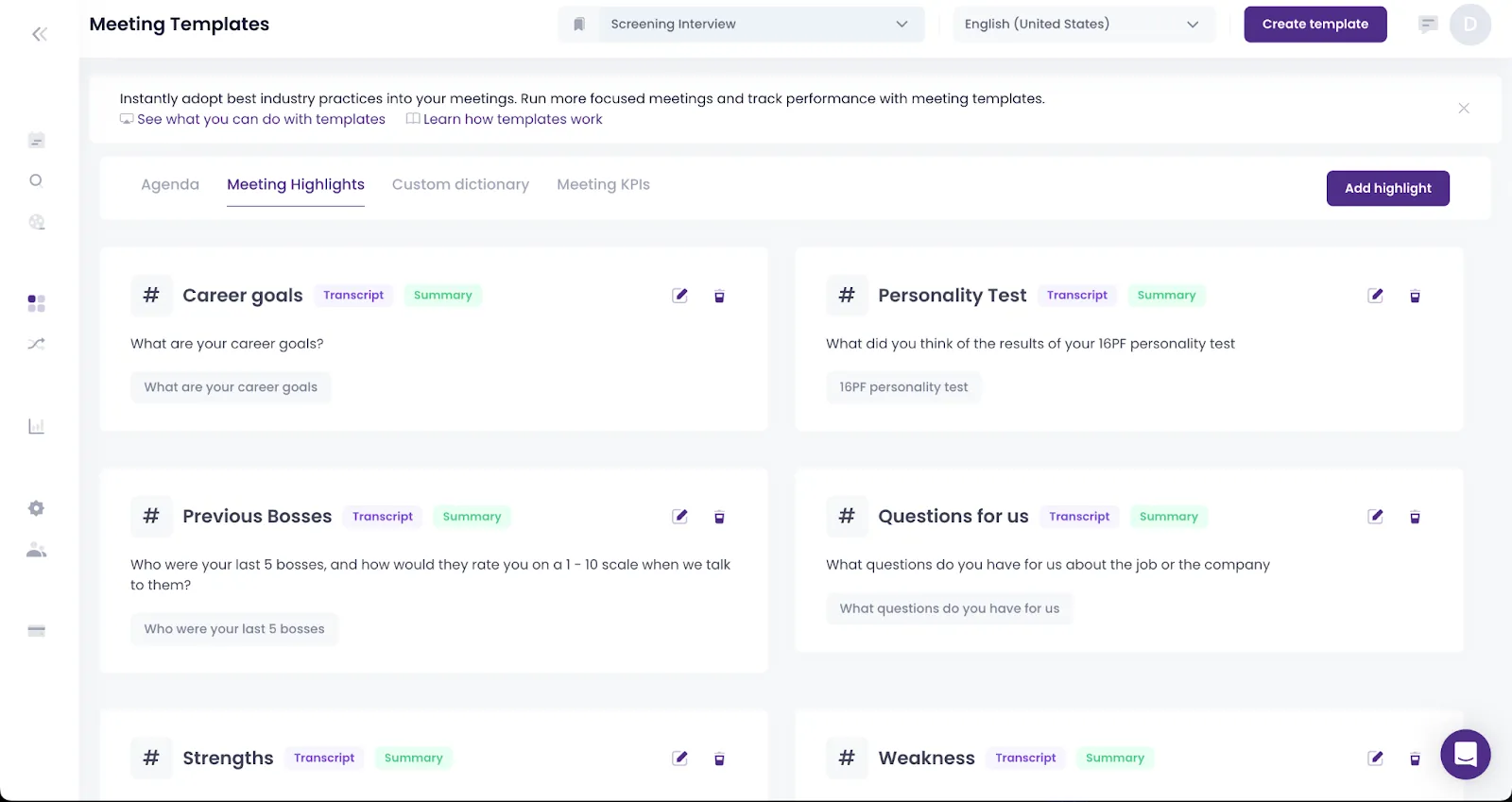
Dica #3: Não tenha medo de pedir ao orador que se repita
Em certos cenários de entrevista, pode ser desconfortável pedir a alguém que se repita. No entanto, na maioria dos casos, as pessoas estão dispostas a repetir o que disseram para que você possa registrá-lo com precisão. Tudo o que você precisa fazer é pedir esclarecimentos educadamente.
Isso é especialmente importante em entrevistas remotas conduzidas em plataformas como Zoom, Google Meet, ou Microsoft Teams, onde podem ocorrer atrasos no som ou problemas técnicos. Pedir que a outra pessoa se repita durante uma videochamada não é considerado nada profissional, pois ajuda você a entender as informações corretamente e a fazer anotações adequadas.
Ouvir a resposta de um candidato pela segunda vez também pode melhorar sua retenção das informações, especialmente quando combinadas com anotações.
Dica #4: Faça perguntas para preencher os espaços em branco
Fazer perguntas durante a entrevista serve a dois propósitos importantes. Em primeiro lugar, ele permite que você reúna as informações necessárias sobre a capacidade de um candidato de preencher a vaga e ajuda a esclarecer quaisquer declarações vagas do entrevistado, para que suas anotações possam ser precisas.
Em segundo lugar, mostra seu interesse genuíno pela pessoa e pelo processo de entrevista, estabelecendo uma conexão significativa e demonstrando sua atenção e desejo de aprender o máximo possível.
Dica #5: preste atenção às dicas não verbais
Ao conduzir entrevistas, preste atenção em sinais não verbais como contato visual, expressões faciais e linguagem corporal, pois podem fornecer informações valiosas e melhorar a qualidade das anotações da entrevista.
Essas dicas também podem indicar as habilidades de comunicação, o nível de interesse e o engajamento do entrevistado na conversa. Sinais de atenção, como inclinar-se para frente, acenar com a cabeça ou manter contato visual, mostram que o entrevistado está ativamente envolvido.
Por outro lado, sinais de desinteresse, como ficar inquieto ou evitar o contato visual, podem sugerir que certos tópicos precisam de mais esclarecimentos ou ajustes.

Dicas não verbais também podem ajudá-lo a entender as emoções e atitudes do entrevistado em relação a tópicos ou perguntas específicas. Incorporar essas observações em suas anotações pode adicionar profundidade e contexto às respostas do entrevistado.
Fique alerta e evite distrações usando um assistente de reunião para fazer anotações. Dessa forma, você poderá se concentrar totalmente na conversa e nas dicas não verbais.
DICA PROFISSIONAL: Se você notar uma discrepância entre as dicas verbais e não verbais do entrevistado, use instruções ou perguntas investigativas para explorar mais. Perguntar se há mais alguma coisa que eles gostariam de acrescentar ou se estão se sentindo desconfortáveis ao discutir um determinado tópico pode ajudar a descobrir insights mais profundos.
Dica #6: capture todos os detalhes relevantes, mesmo que você não tenha perguntado especificamente sobre eles
Ao fazer anotações, você deve capturar todos os detalhes significativos que surgirem naturalmente durante a conversa. Preste atenção às informações adicionais fornecidas voluntariamente pelo candidato. Os candidatos geralmente compartilham informações importantes que podem ser úteis, mesmo que você não tenha perguntado especificamente sobre elas.
Se o candidato compartilhar uma história ou exemplo que destaque suas habilidades ou experiência, anote-a. Essas histórias podem servir como referências valiosas quando você toma a decisão final sobre quem contratar ou quando discute o candidato com outros membros da sua equipe.
No entanto, embora seja importante registrar os pontos fortes do candidato, não se esqueça de registrar todas as áreas em que o candidato precise ser desenvolvido, como lacunas de conhecimento, falta de experiência ou quaisquer preocupações levantadas durante a entrevista.
DICA PROFISSIONAL: Se o candidato abordar um assunto sobre o qual você não perguntou especificamente, não hesite em fazer perguntas complementares. Por exemplo, se eles mencionarem brevemente sua experiência com uma ferramenta de software específica, peça que se aprofundem em sua proficiência ou em quaisquer realizações notáveis associadas a essa ferramenta. Se eles mencionarem fazer algum curso relevante, peça-lhes que entrem em mais detalhes.
Dica #7: Priorize ouvir em vez de escrever ou digitar
Ao fazer anotações, lembre-se de que seu foco deve estar na outra pessoa, não apenas em anotar as respostas do candidato. Embora seja tentador tentar capturar cada palavra, isso pode fazer com que você perca nuances importantes na resposta.
Para piorar o problema, se você não conseguir manter contato visual, os candidatos podem rapidamente presumir que você não está interessado no que eles têm a dizer, e a entrevista só piorará a partir daí.
Tente equilibrar a audição e a escrita registrando os pontos principais em vez de tentar documentar tudo. A maior parte do seu tempo deve ser gasta ouvindo ativamente e formando uma impressão geral do candidato.
A escuta ativa pode se tornar fácil com um assistente de reunião virtual, como Conheça o Geek, que grava, transcreve, resume e analisa automaticamente suas entrevistas.
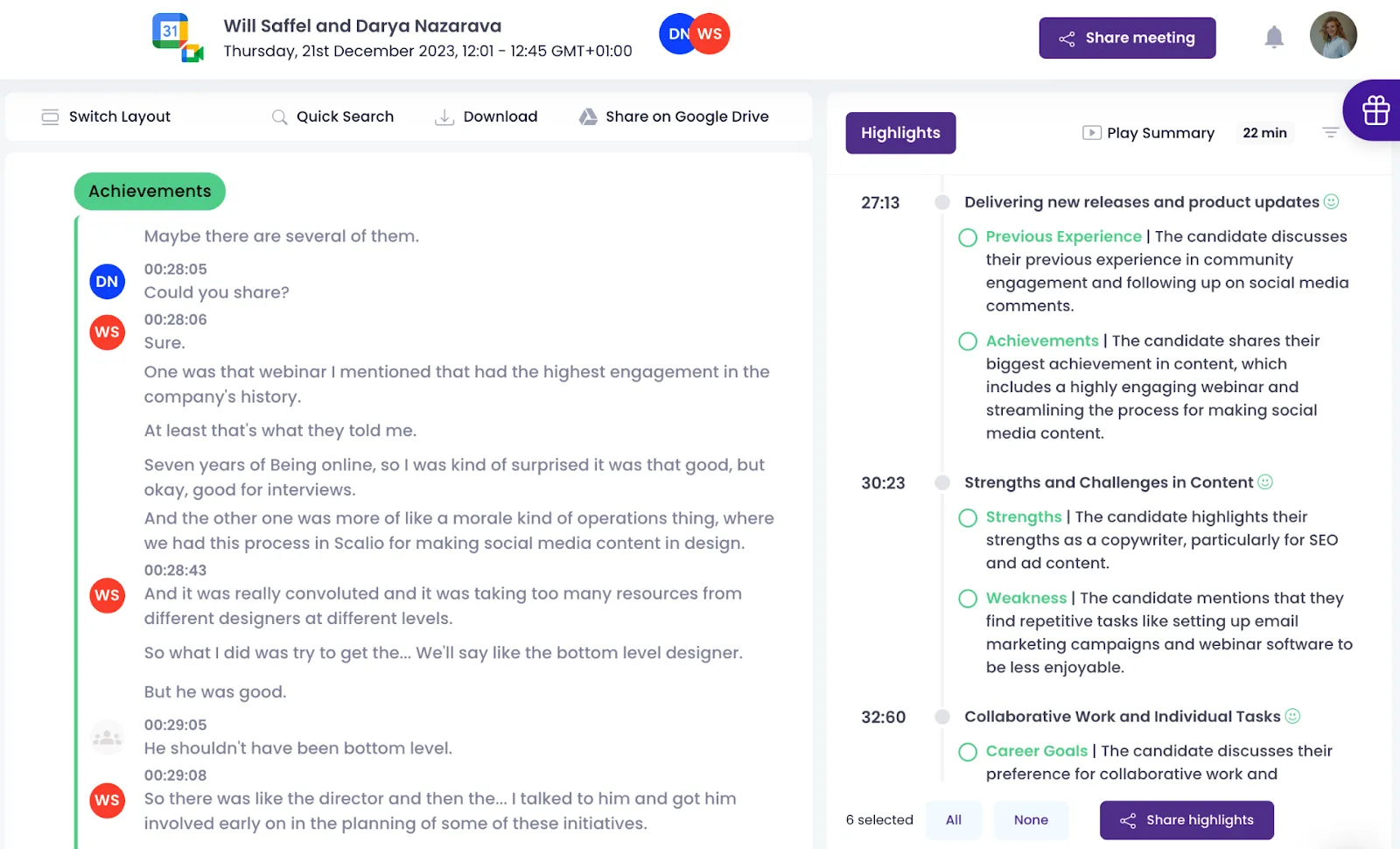
Dessa forma, você pode fazer apenas algumas anotações em vez de passar a maior parte da entrevista digitando todas as respostas na íntegra.
Dica #8: Revise as notas o mais rápido possível após a entrevista
Depois da entrevista, reserve um tempo para expandir suas anotações antes de esquecer qualquer informação importante. Isso evitará que você se sinta apressado e permitirá que você capture todas as informações relevantes. Ou melhor ainda, contrate um assistente de reunião como MeetGeek para ajudar você a se lembrar de todos os detalhes compartilhados por um candidato, mesmo semanas após a entrevista.
Se você tem uma equipe de contratação, consolidar as anotações de todos em um único documento pode ser benéfico. Ele permite que você compare os candidatos com mais eficiência, veja como os outros interpretaram suas respostas e identifique quaisquer padrões em suas reações. Esse documento consolidado também pode servir como base para discussão ao selecionar o candidato que corresponde perfeitamente à descrição do cargo.
À medida que você ganha experiência em fazer anotações de entrevistas, você desenvolverá seu próprio sistema para tornar o processo mais eficiente. Reflita sobre quais partes de suas anotações foram mais úteis na tomada de decisões de contratação e considere quais informações adicionais poderiam melhorar seu processo de tomada de decisão.
Dica #9: Ajude os gerentes a tomarem as melhores decisões de contratação por meio de suas anotações
Se você é recrutador, é sua responsabilidade ajudar os gerentes e outros membros da equipe envolvidos na tomada de decisões, fornecendo informações objetivas, precisas e perspicazes.
Evite linguagem subjetiva e baseie suas avaliações nas palavras e no comportamento reais do candidato durante a entrevista. Inclua quaisquer preocupações ou reservas específicas que você possa ter.
Dessa forma, suas anotações podem ser recomendações valiosas para as próximas etapas, como conduzir entrevistas adicionais ou estender uma oferta. Se você ainda está descobrindo as coisas ou se o fluxo de candidatos é muito abundante, gravar suas entrevistas pode dar aos gerentes uma ideia mais clara de como eles devem proceder.
Modelo de notas de entrevista
Você precisa de mais tempo para refinar o processo de anotações da entrevista? Não se preocupe! Preparamos um modelo de entrevista de emprego que você pode personalizar de acordo com suas necessidades. Confira abaixo!
Este modelo foi desenvolvido para capturar notas abrangentes de uma entrevista, ajudando você a avaliar as habilidades dos candidatos com mais eficiência e garantir um processo de contratação completo.
Comece a fazer anotações de entrevistas com IA com o MeetGeek!
Entrevistar vários candidatos para um emprego importante e ter dificuldade em relembrar os detalhes de cada entrevista não é uma tarefa fácil. Boas notas de entrevista permitem que você capture detalhes e insights importantes sobre cada candidato, facilitando a comparação e a tomada de decisões informadas posteriormente.
Você está pronto para um processo de recrutamento mais eficaz? Para agilizar todo o processo e obter resumos e notas gerados por IA, personalizados de acordo com seus requisitos exclusivos, experimente o MeetGeek gratuitamente — confie em nós, você nunca voltará a fazer suas próprias anotações!
.avif)



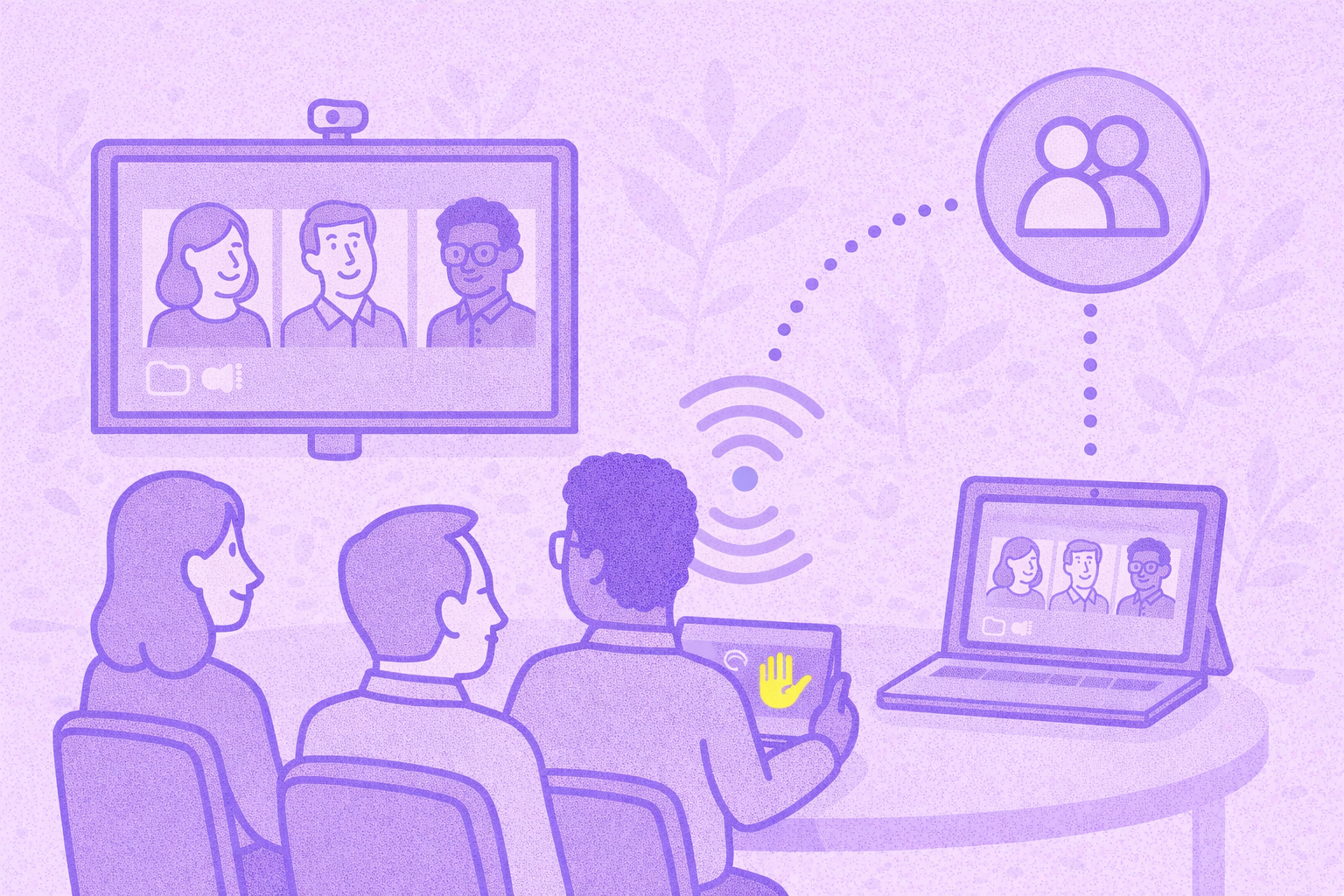
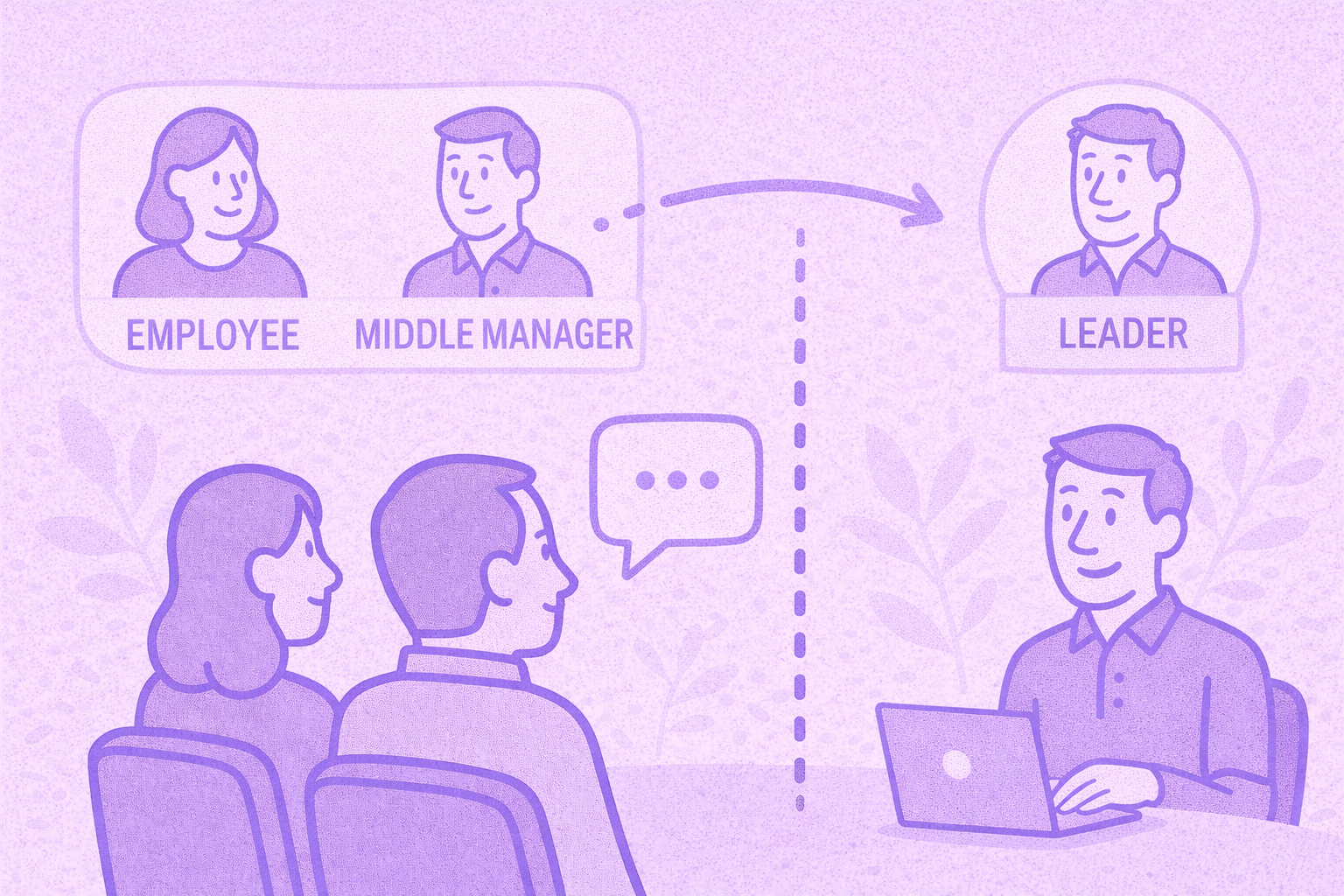


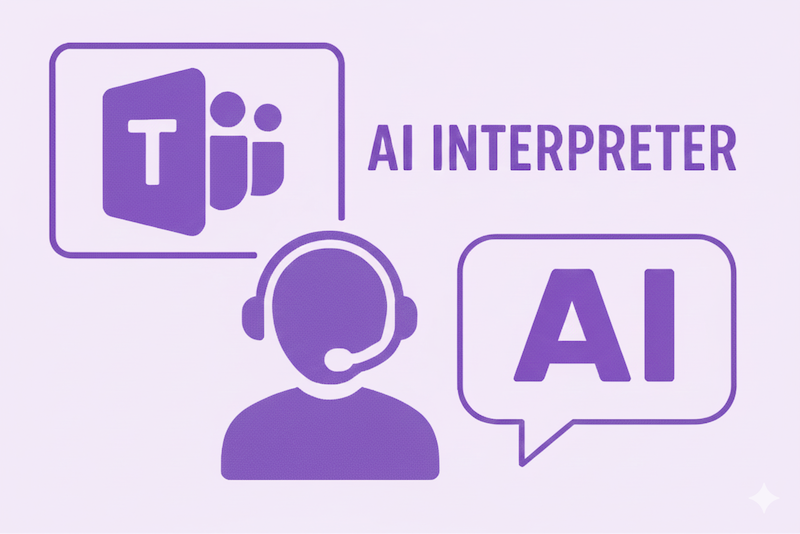






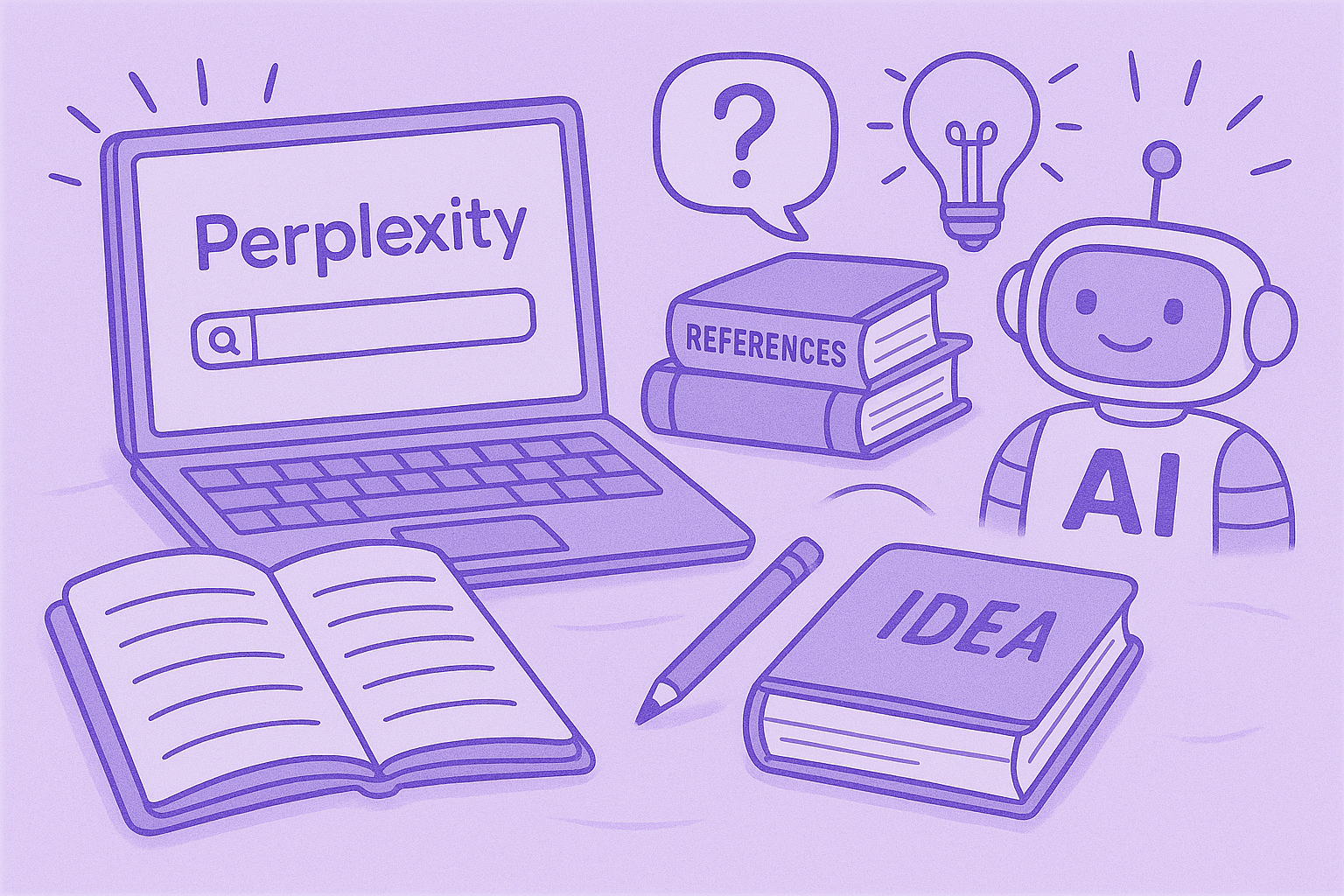







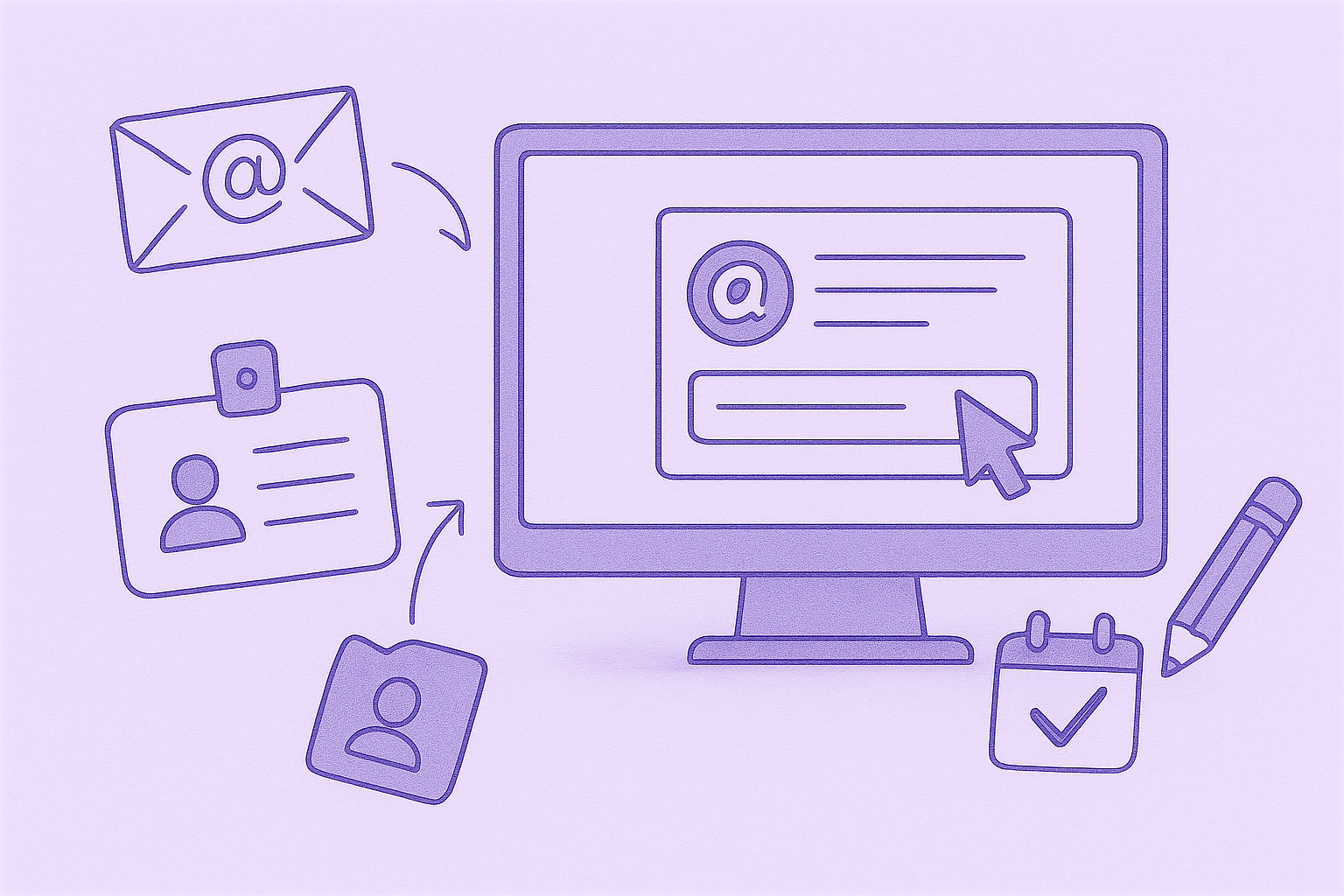
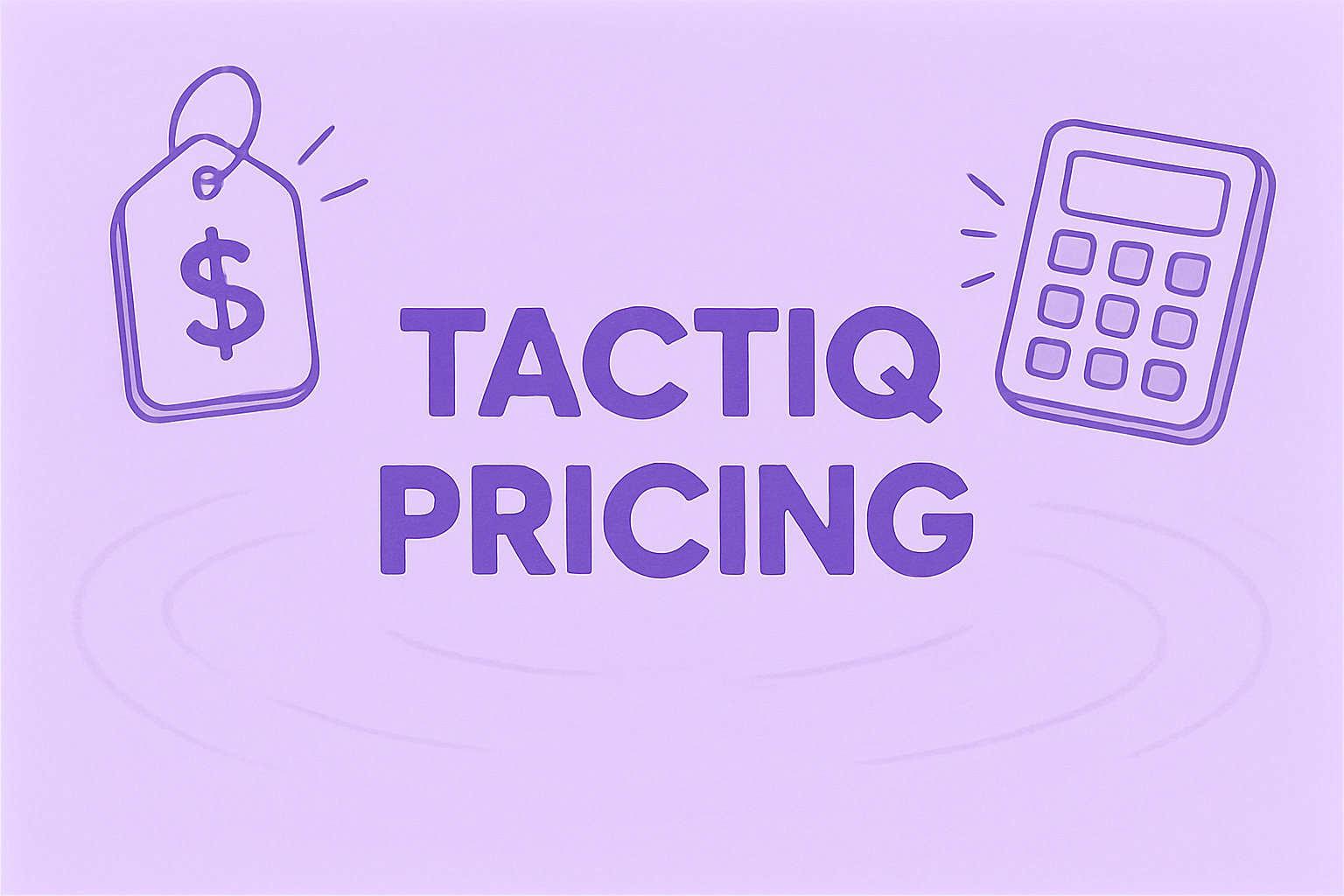
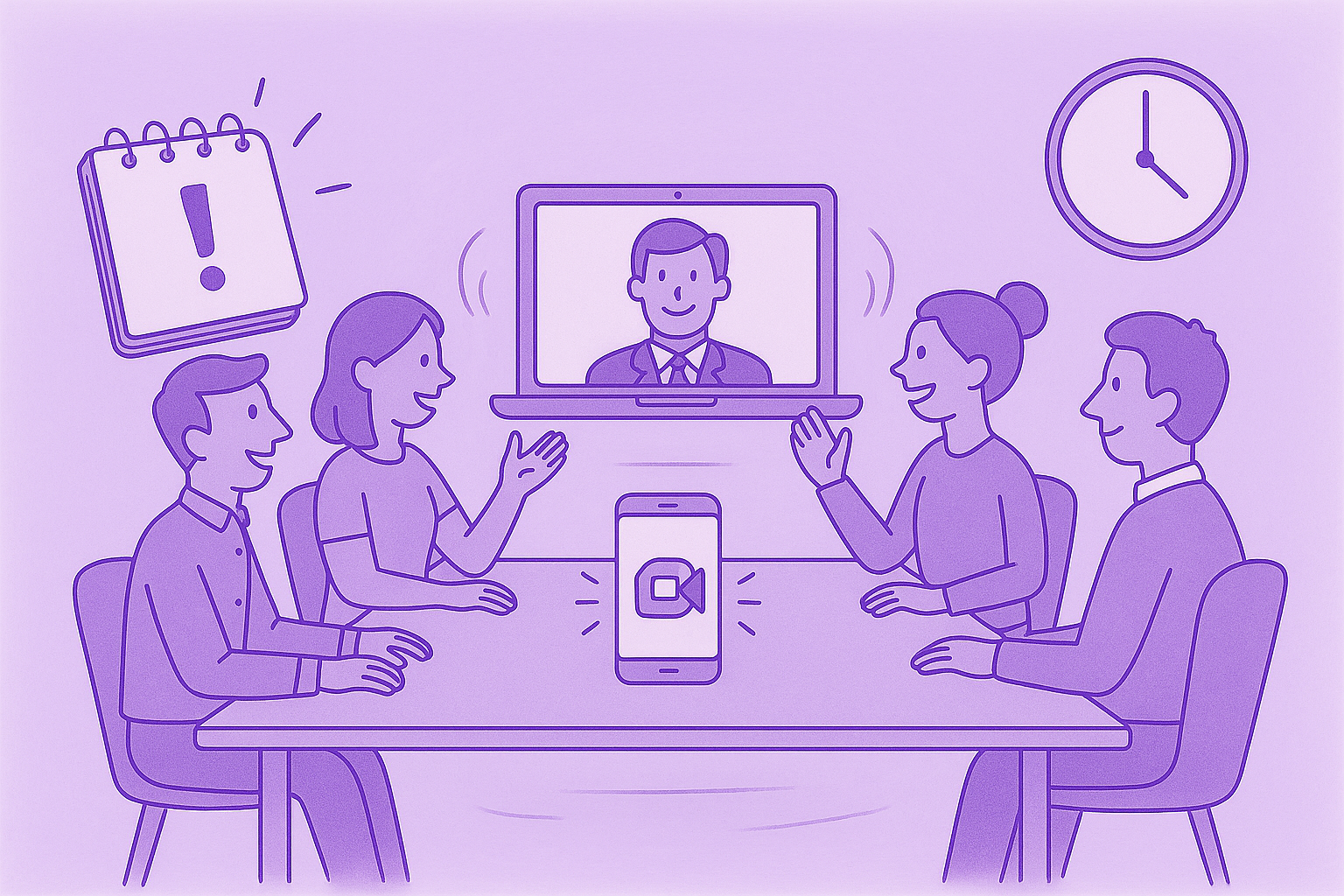
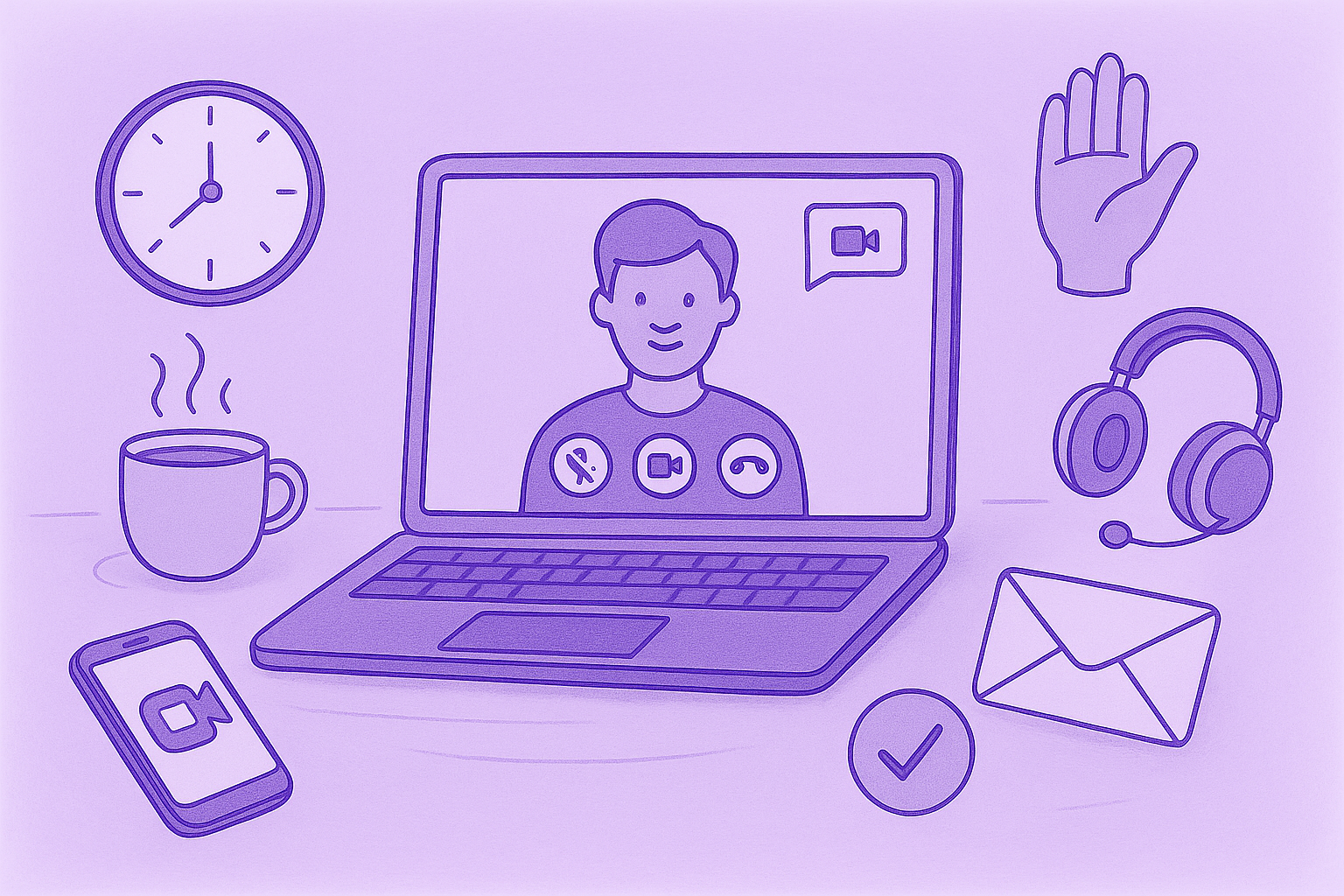





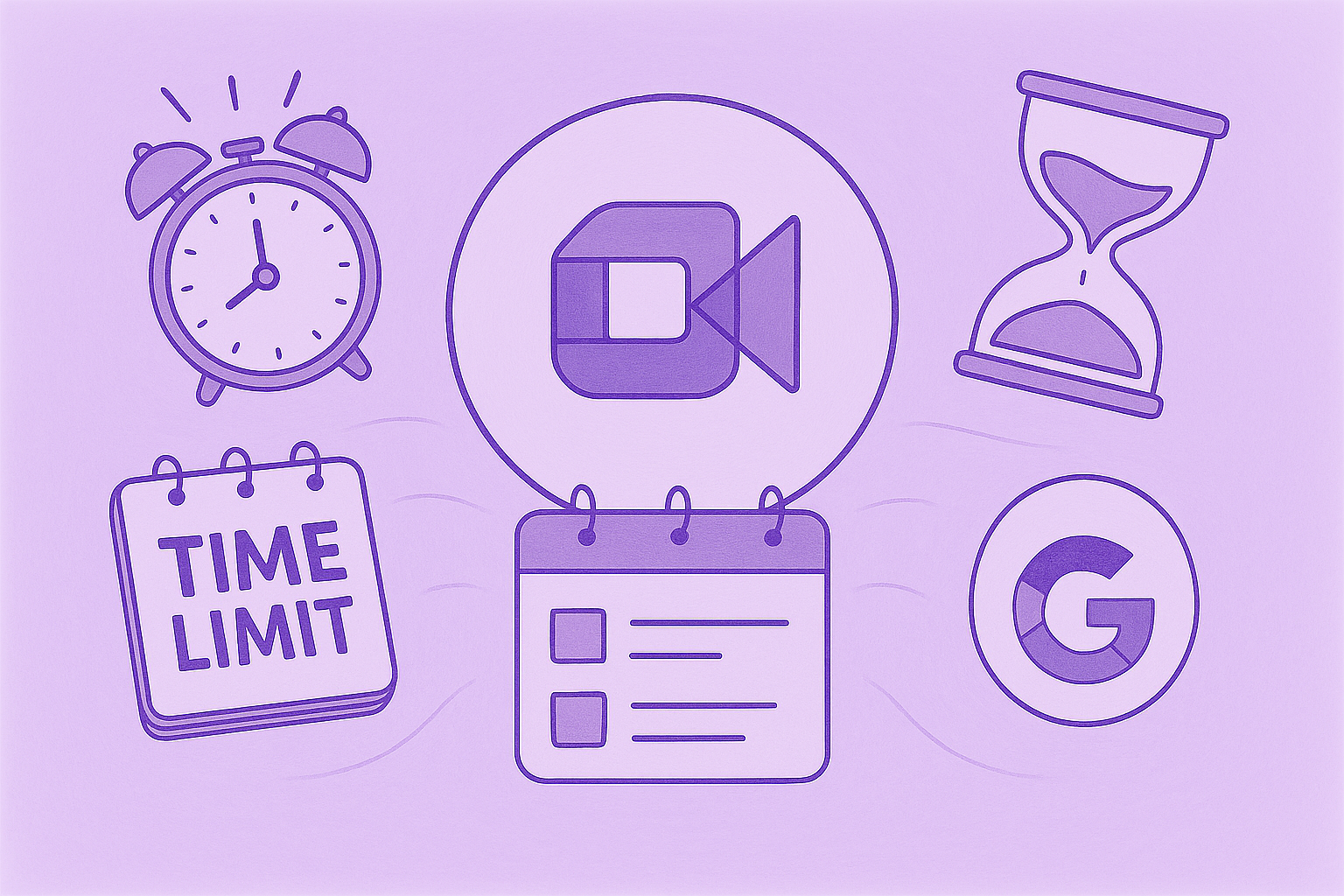

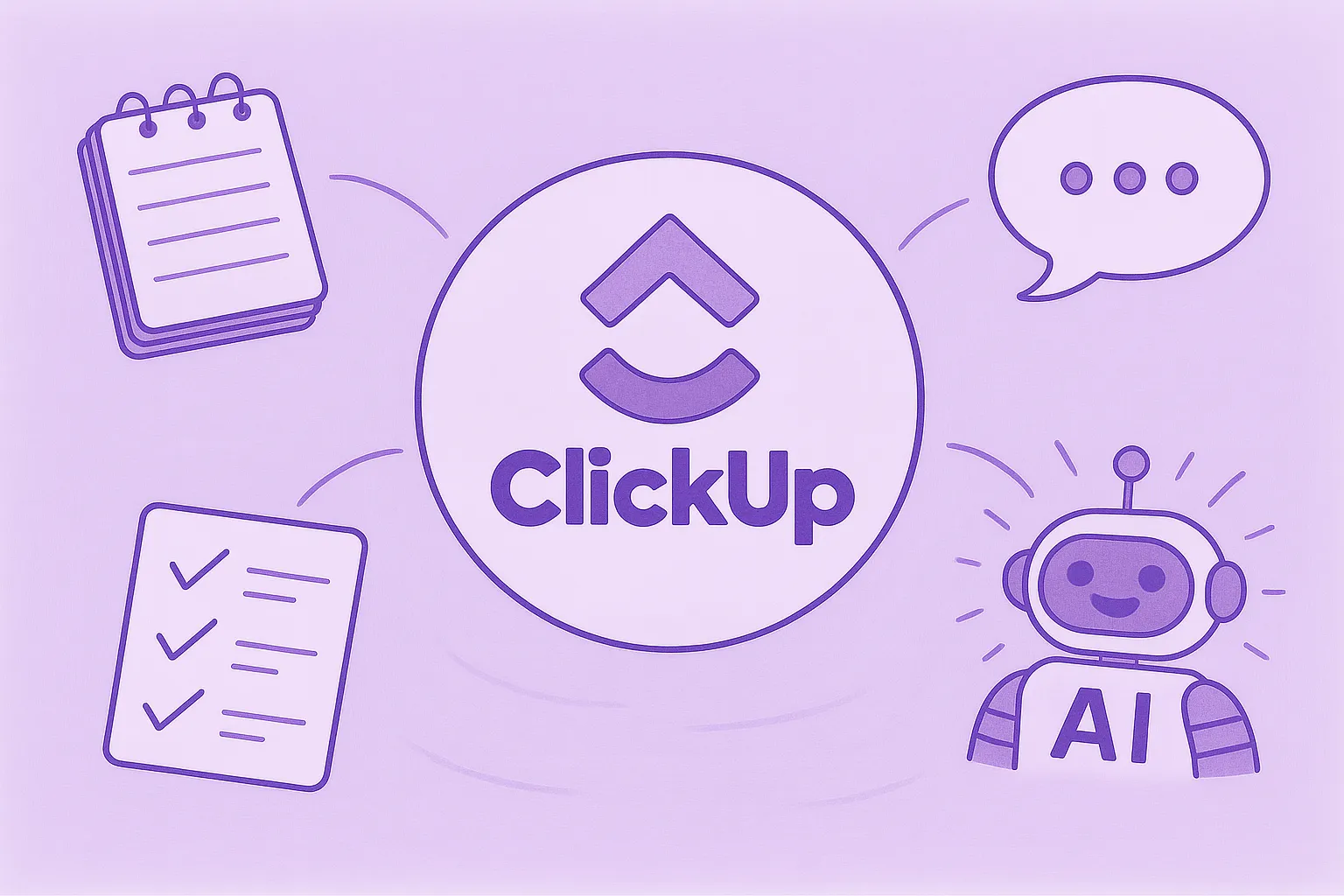


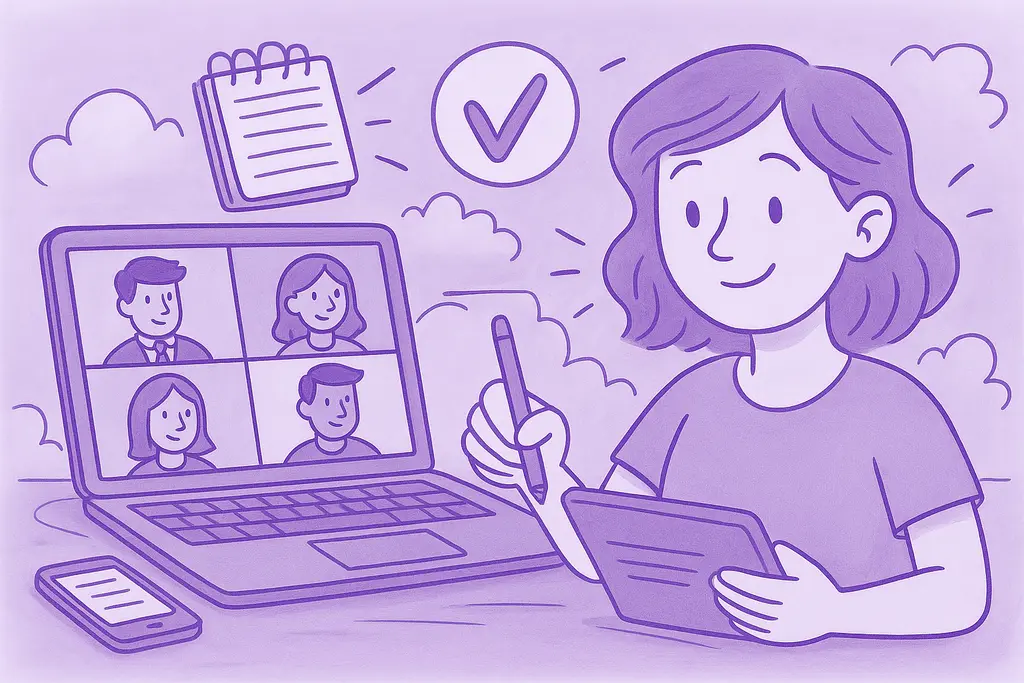
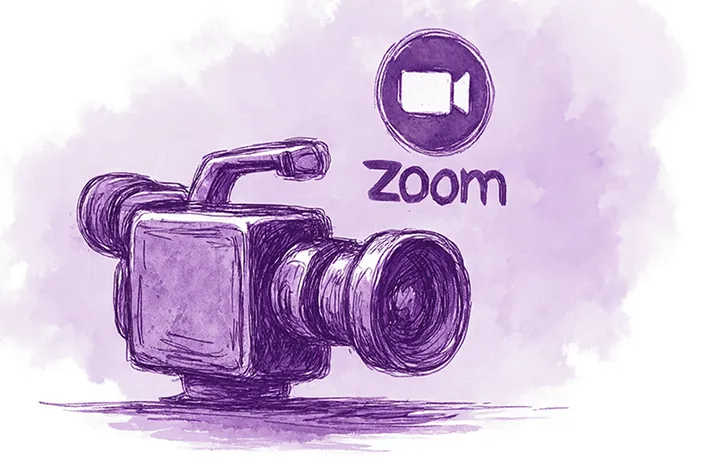
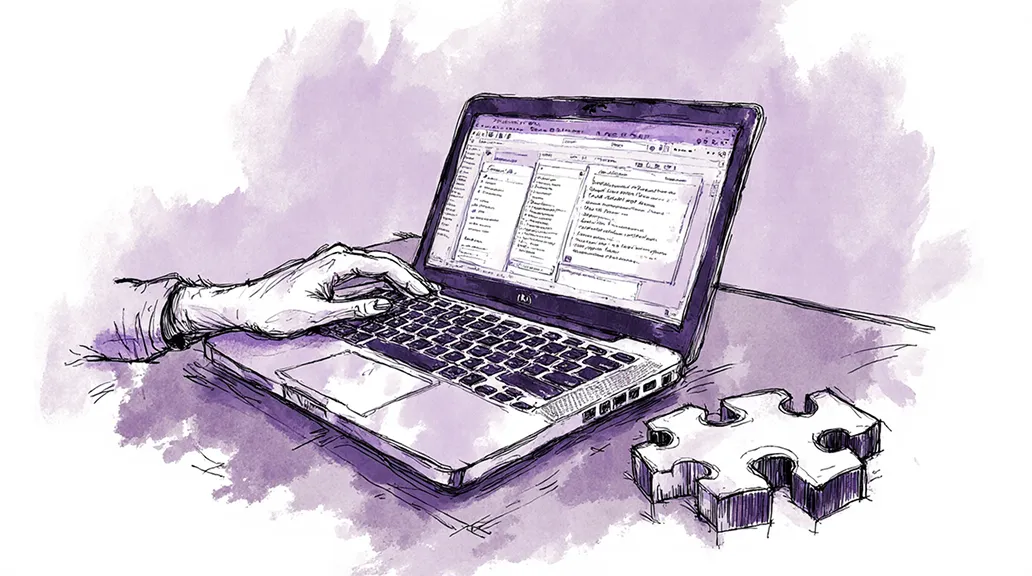












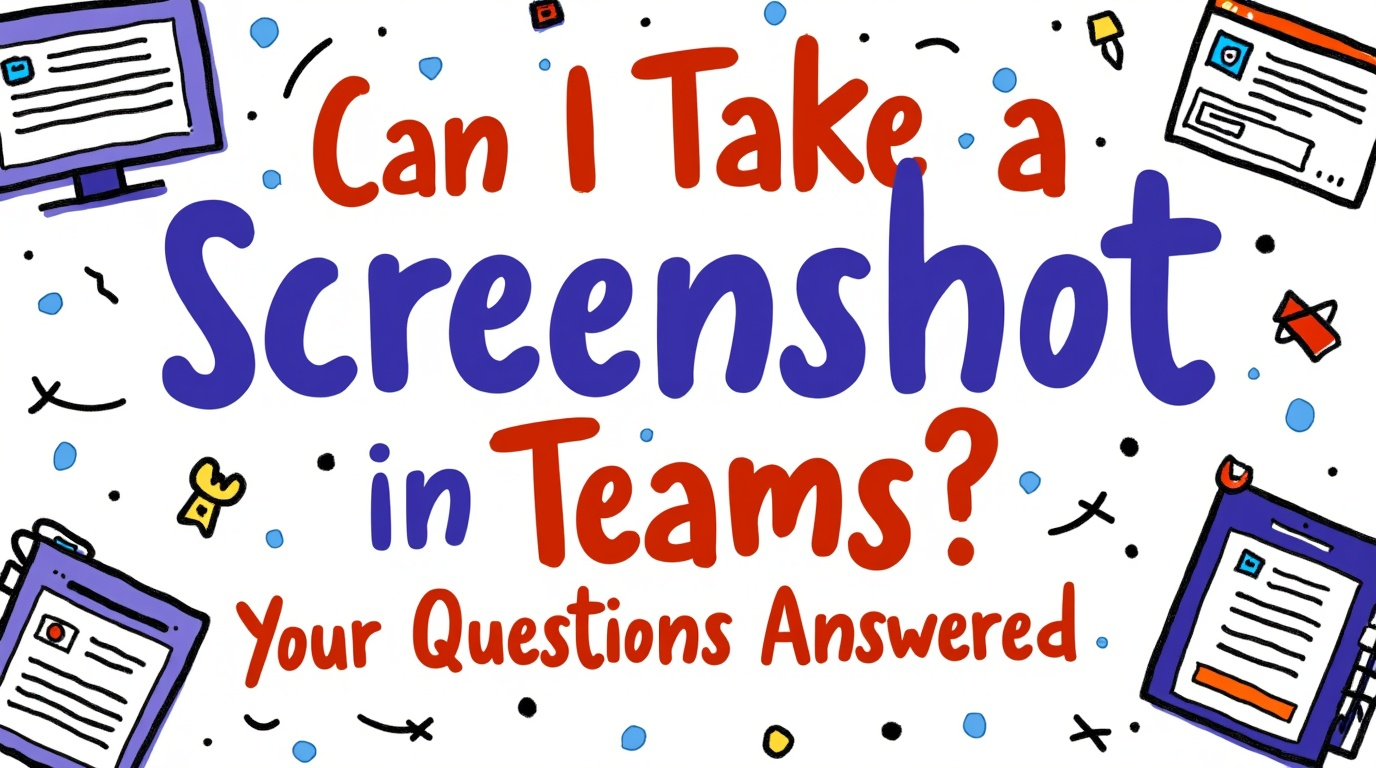

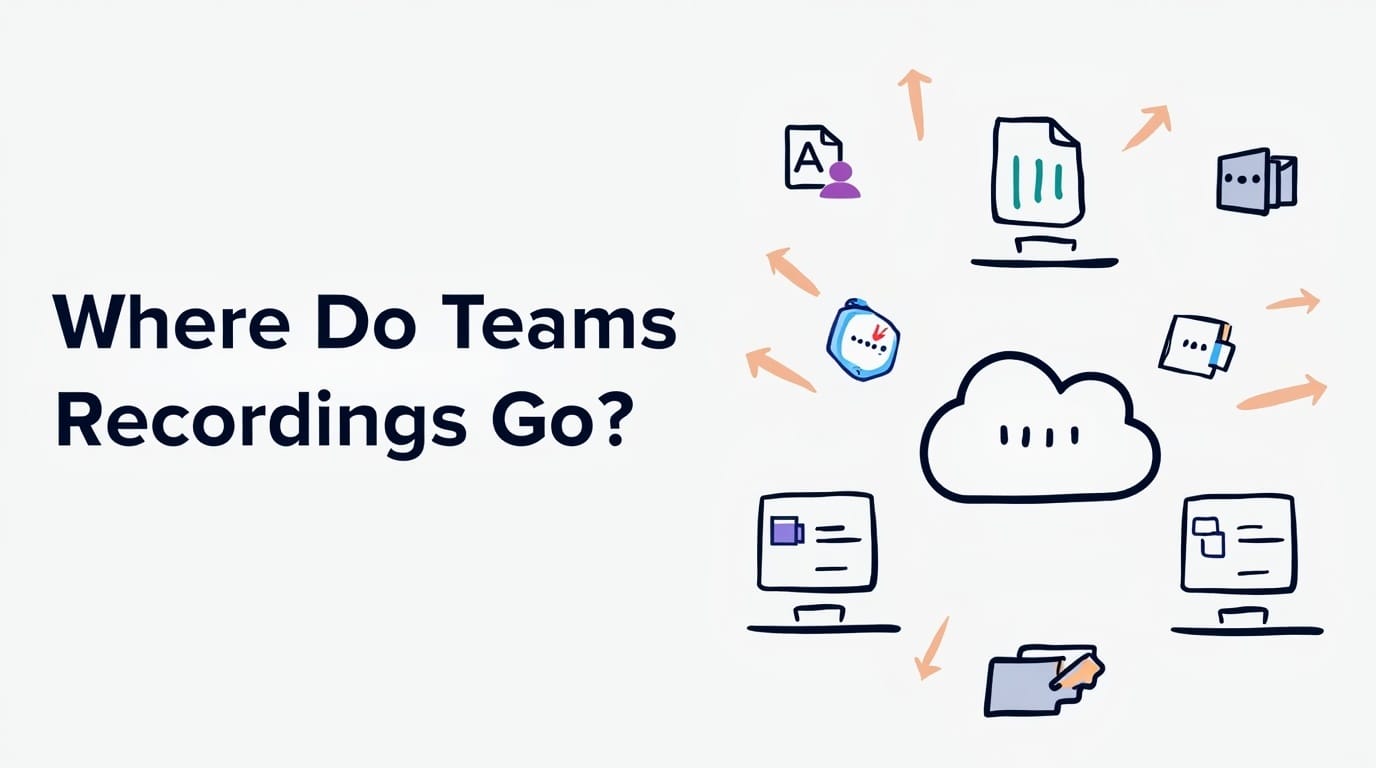

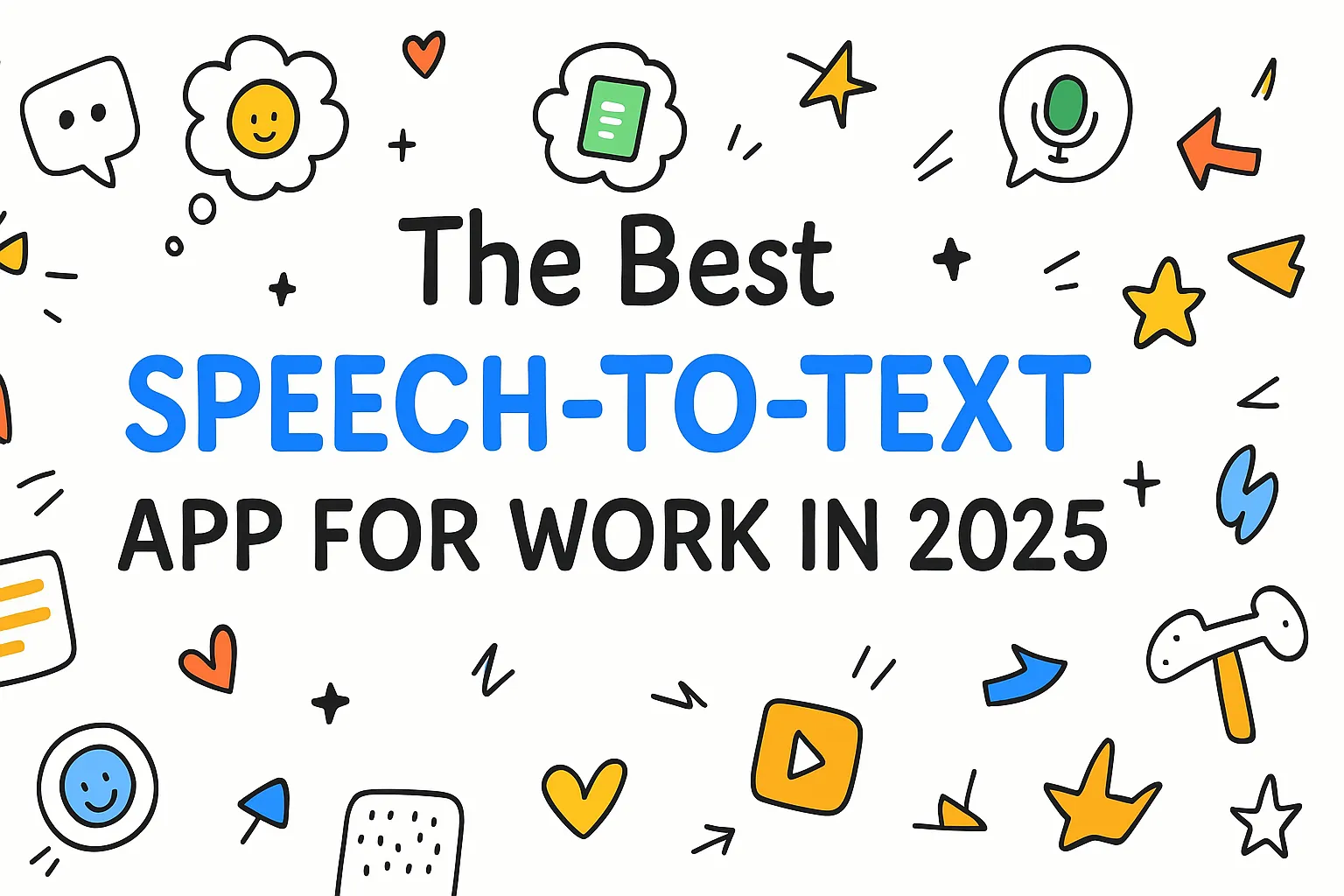




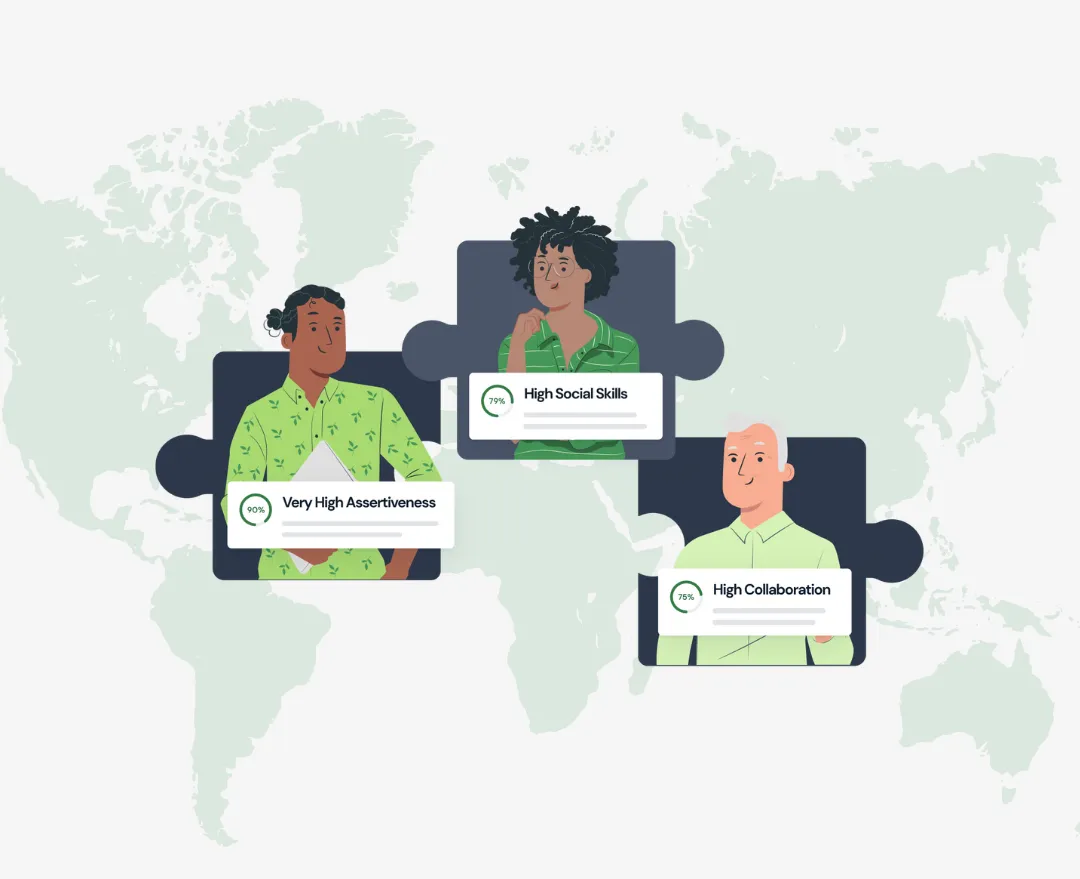
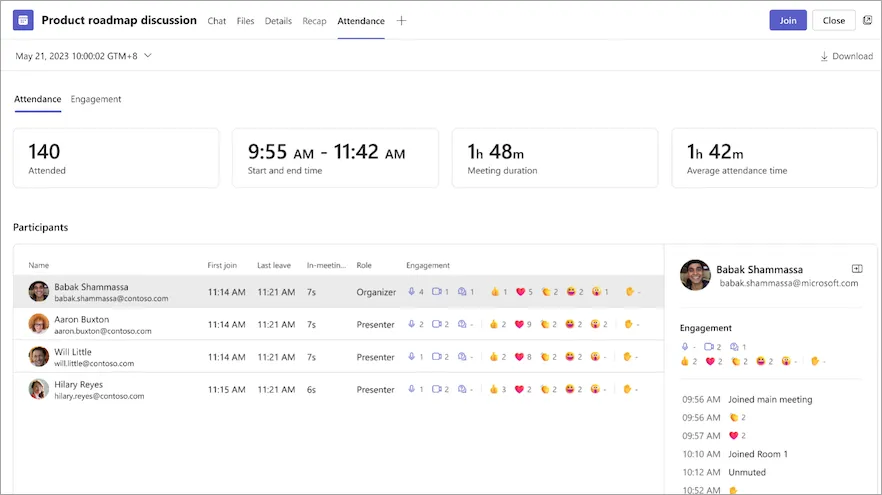






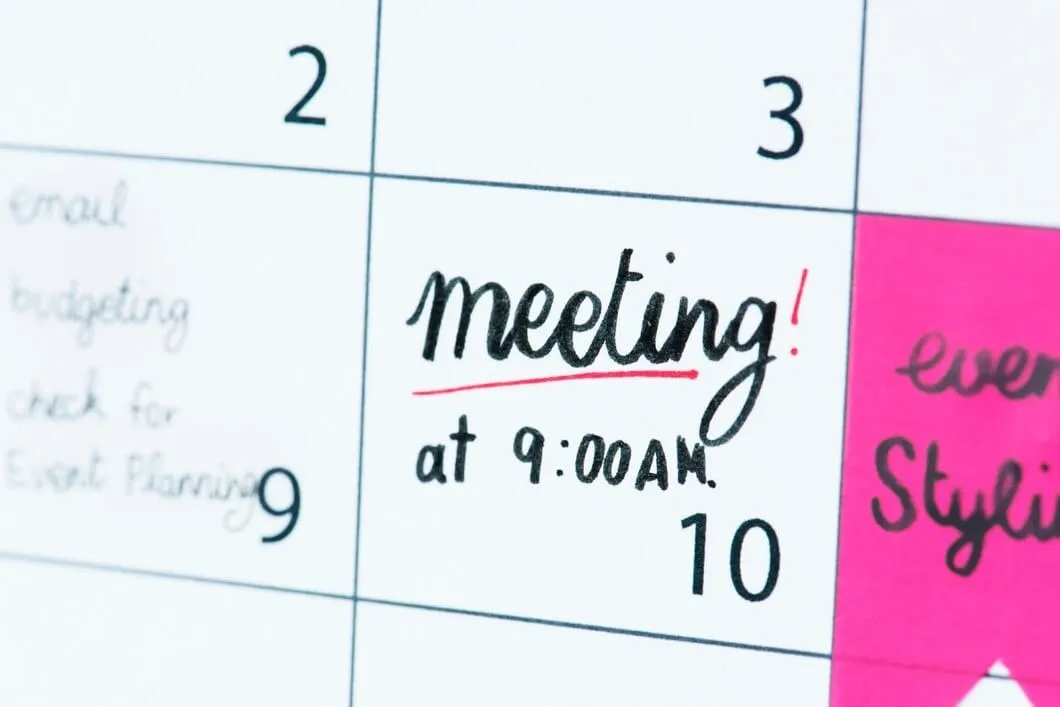


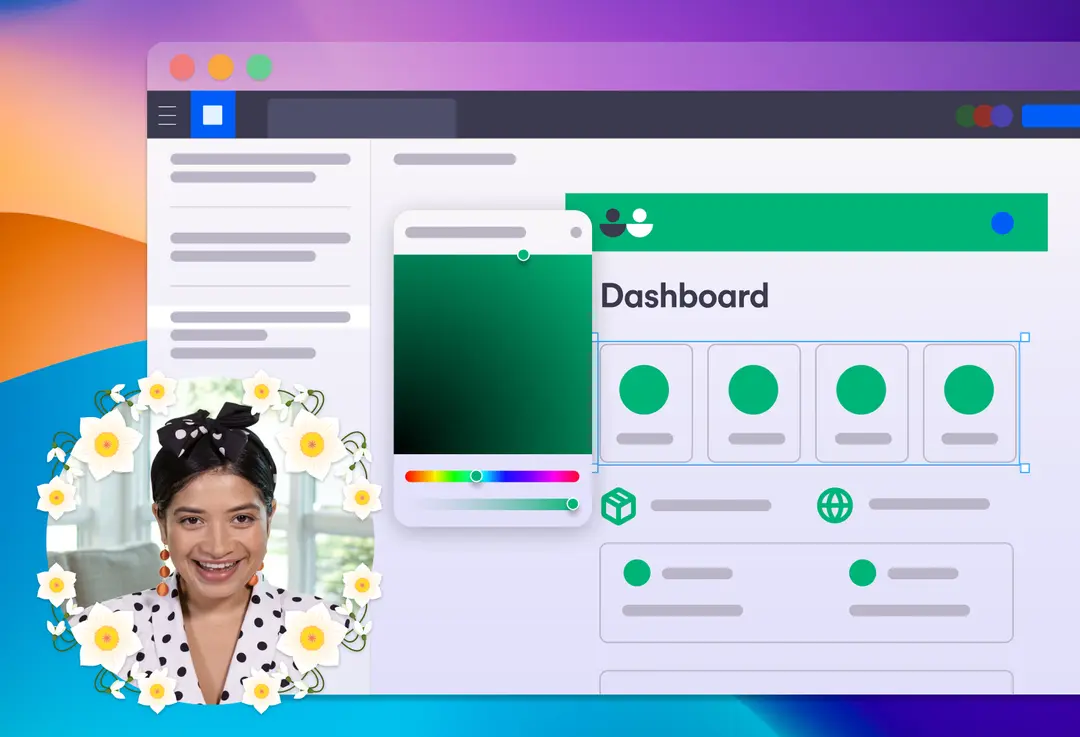
.webp)
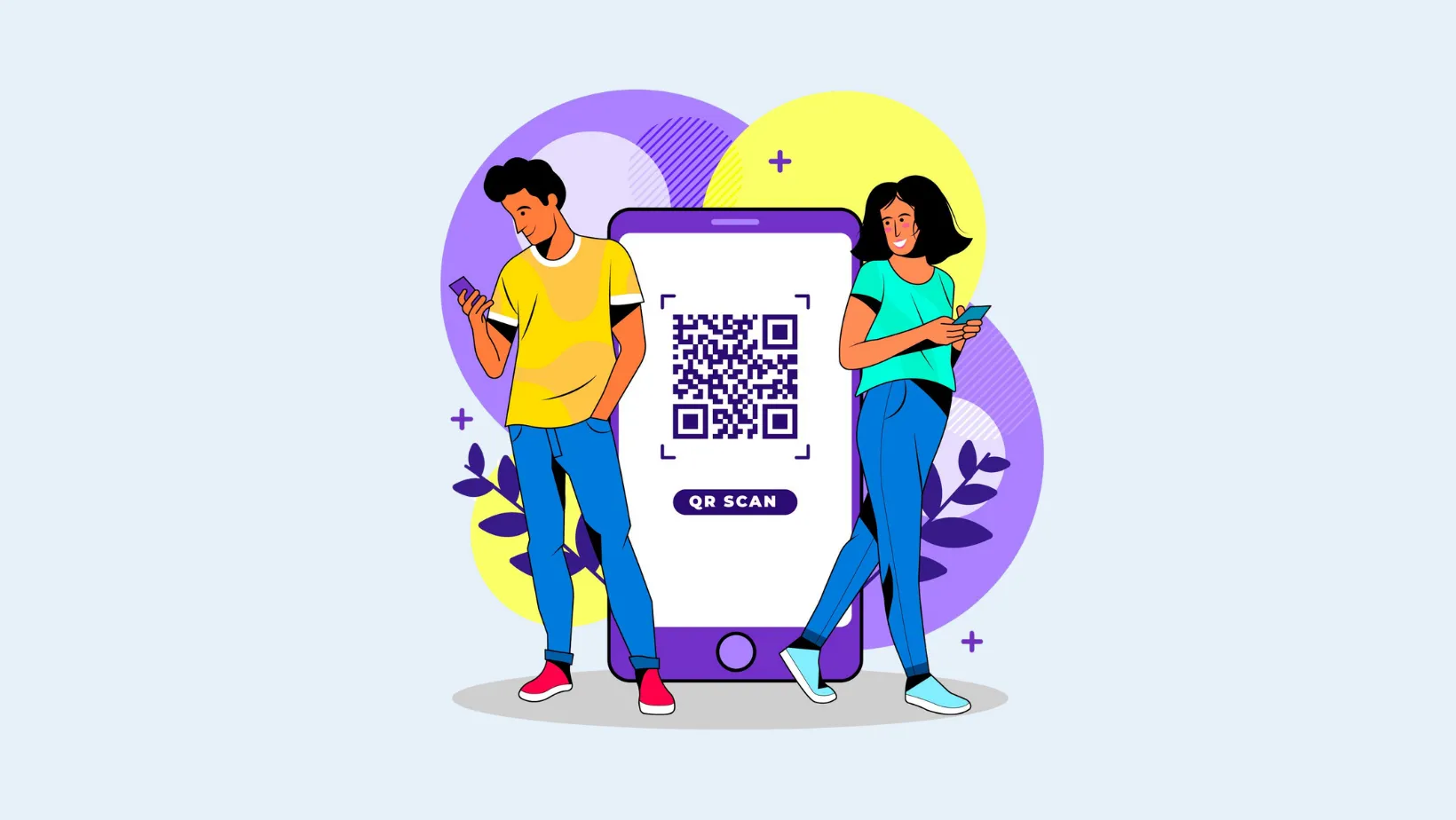

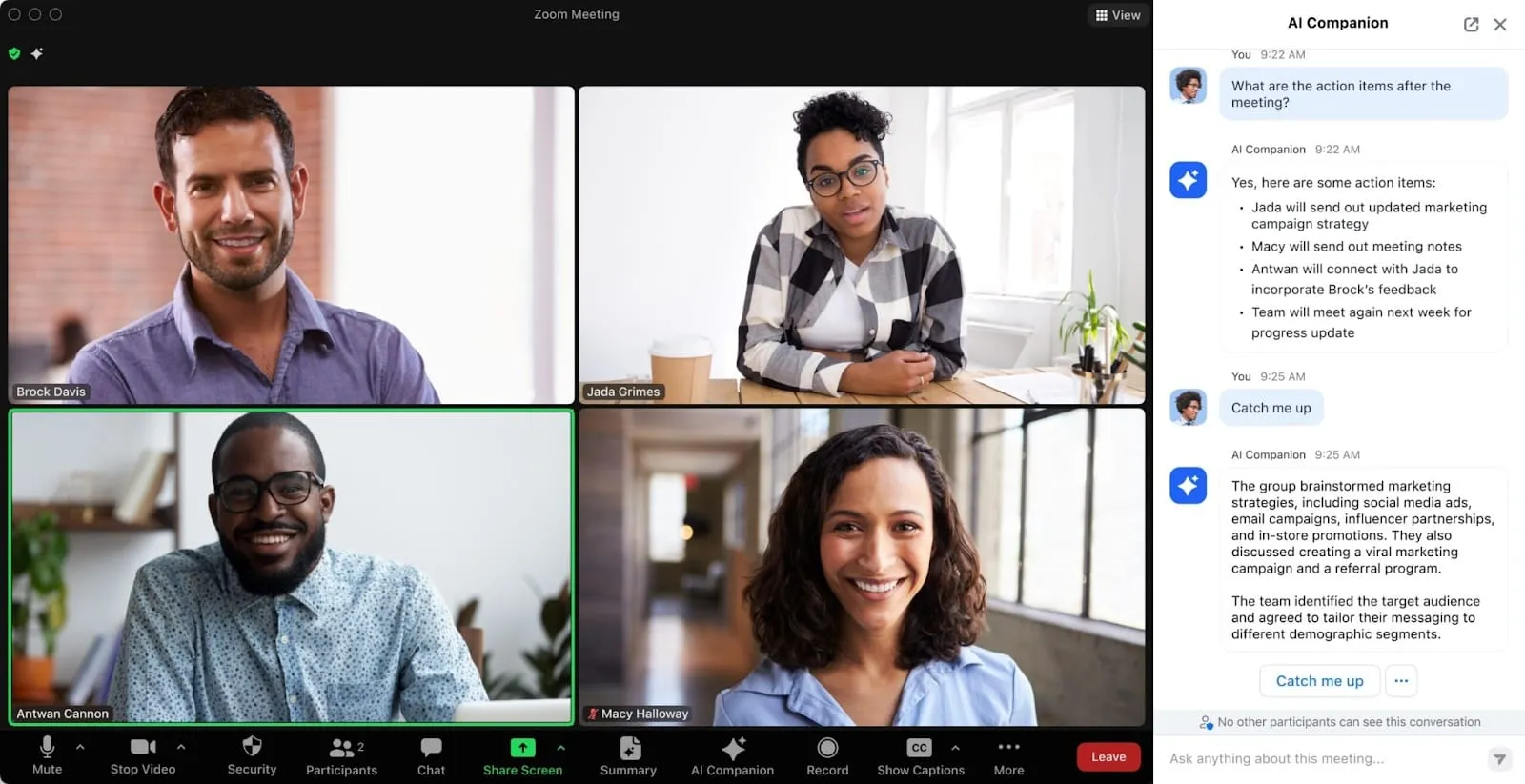




.webp)




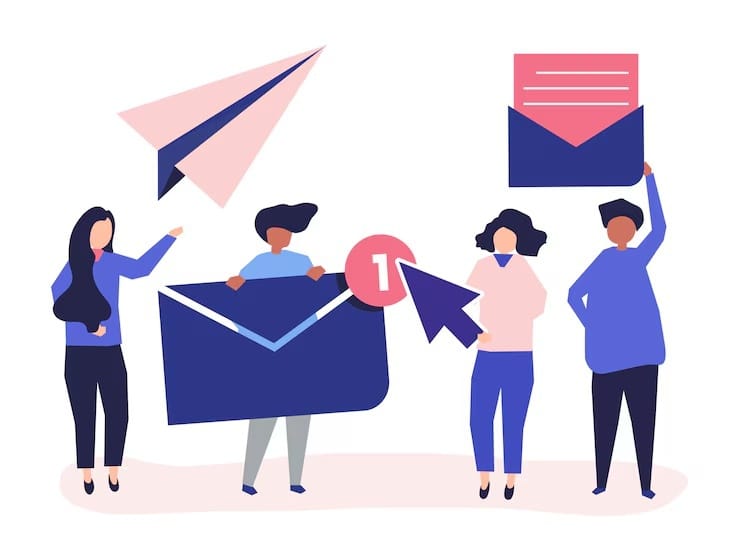

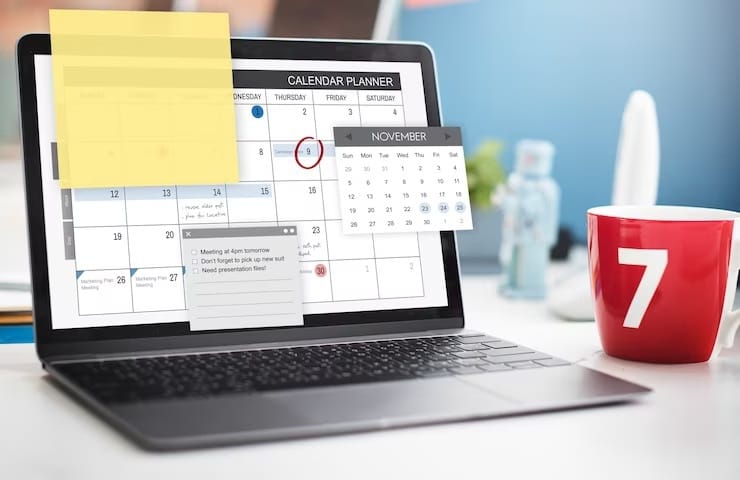
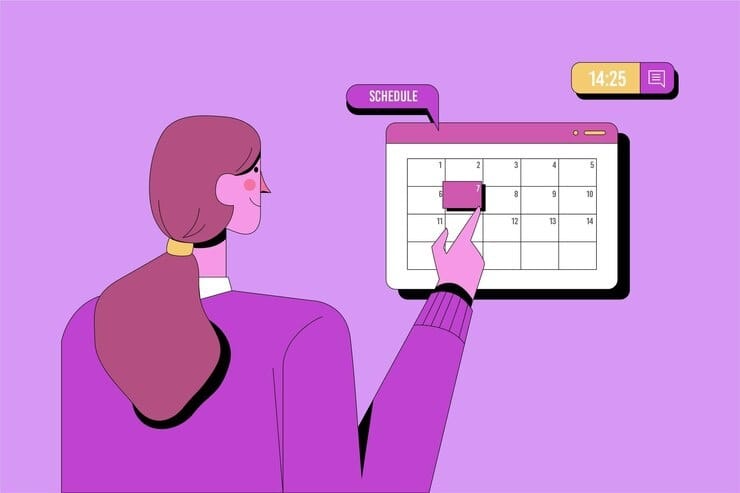




.webp)








